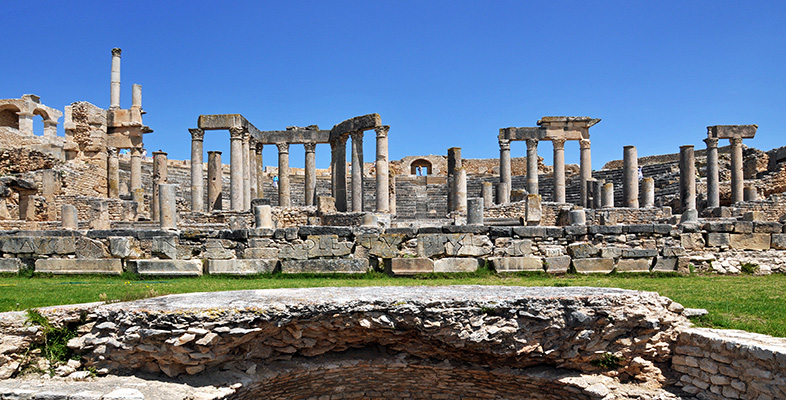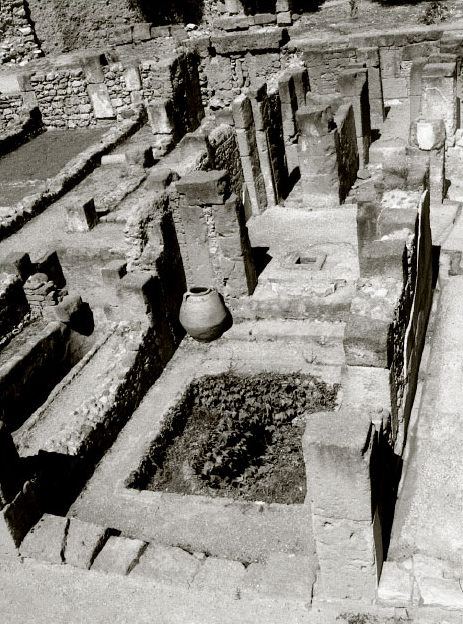2.6 Houses at Carthage, Bulla Regia and Thugga
Your next activity is to watch a video on houses of the Roman élite. The video presents houses from different parts of the empire.
Houses of the Roman élite (part 1 (Intro); 2 minutes)
Transcript: Houses of the Roman élite - Part One (Intro)
Houses of the Roman élite (part 2 (Pompeii); 7.5 minutes)
Transcript: Houses of the Roman élite - Part Two (Pompeii)
Houses of the Roman élite (part 3 (Pompeii continued); 7.5 minutes)
Transcript: Houses of the Roman élite - Part Three (Pompeii continued)
Houses of the Roman élite (part 4 (Ephesus); 8.5 minutes)
Transcript: Houses of the Roman élite - Part Four (Ephesus)
Houses of the Roman élite (part 5 (Africa); 8 minutes)
Transcript: Houses of the Roman élite - Part Five (Africa)
Lisa Nevett has presented a wide-ranging investigation of houses in several parts of the empire and shown how they can provide evidence for expressions of culture and identity. Overall the video provides a broad context for the houses you have seen at Thugga and Bulla Regia. They can be seen as having connections with different aspects of the culture of the Roman empire. Some elements are shared, such as the use of the house as a location for display of status and access to Greek culture, or the use of courtyards and axial arrangements, or characteristic styles of decoration. From the evidence presented in the video we can consider the houses in a number of ways. Are the building materials and their decoration the same in all parts of the empire? Is the arrangement of rooms and their sizes and relationships to one another similar in these different places? Did similar parts of the houses have similar functions? Are there the possibilities for the same social interpretations of the houses in different areas? Can we contrast a ‘Roman’ house with an ‘African’ house? We can ask how much they are African or Roman or Afro-Roman.
Activity 5
Consider which of our four models of cultural interaction best fits the evidence from studying the houses in Africa and elsewhere. Write down your choice (or choices), and note down the evidence which supports your choice in your Learning Journal.
Discussion
It's easy enough to see which houses we might call African – either those similar to the Punic houses in Carthage or the later houses in Africa, allowing the geographical location to be the defining factor (see Figure 6). However, what about the houses that might be ‘Roman’? Do we take the houses in Pompeii as typically Roman? And if so, where does that leave the houses in Ephesus? The question is complex because the houses share some features but in other ways they are distinct from one another. We also need to remember that there are chronological differences to consider. The Punic houses were abandoned following the Roman conquest; all the houses in Pompeii were destroyed in AD 79; and the rest of those in Africa date from the second century onwards, with later alterations and reorganisations. It is also important to consider whether the houses are comparable as the homes of élite members of society in different parts of the empire, or whether each is the home of a different class or kind of person. There is more discussion below.

